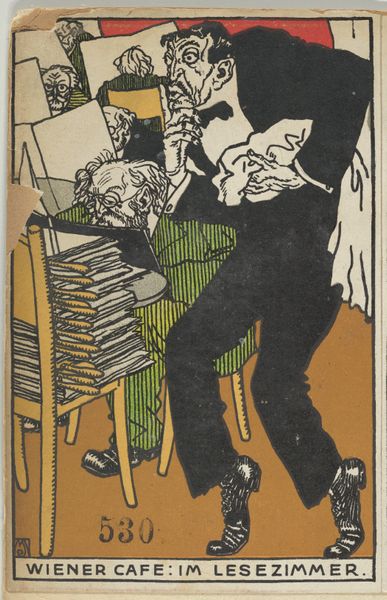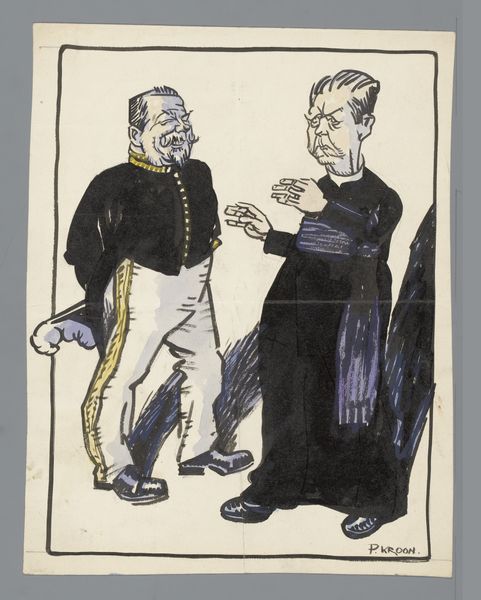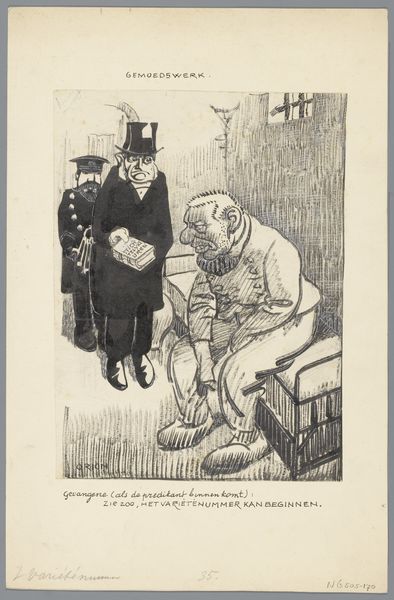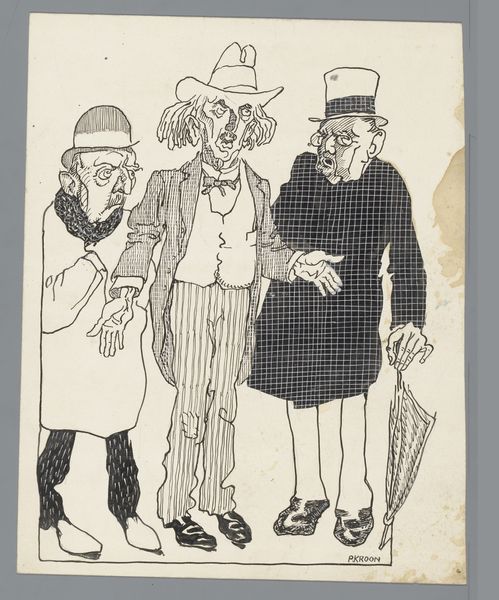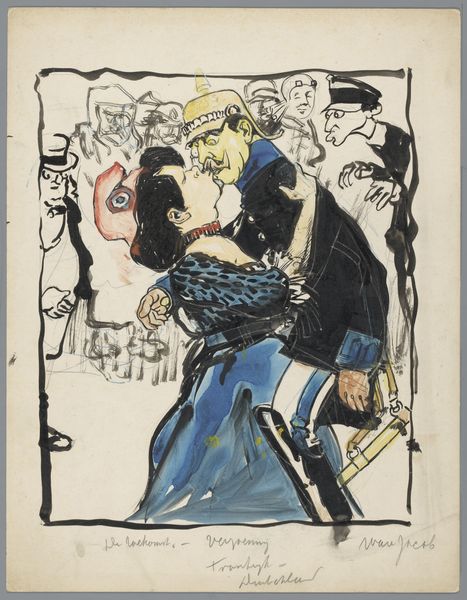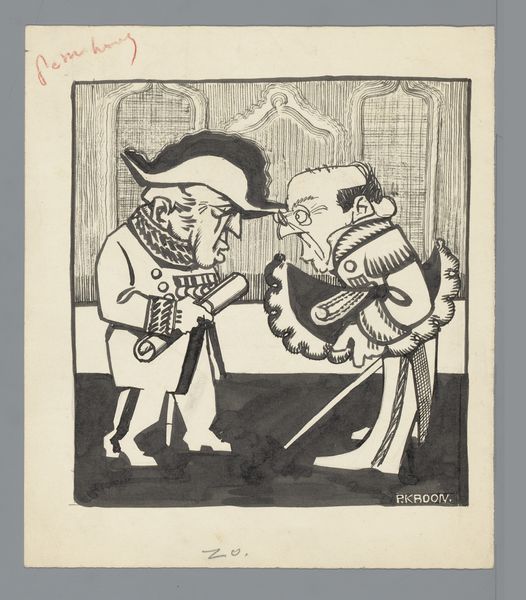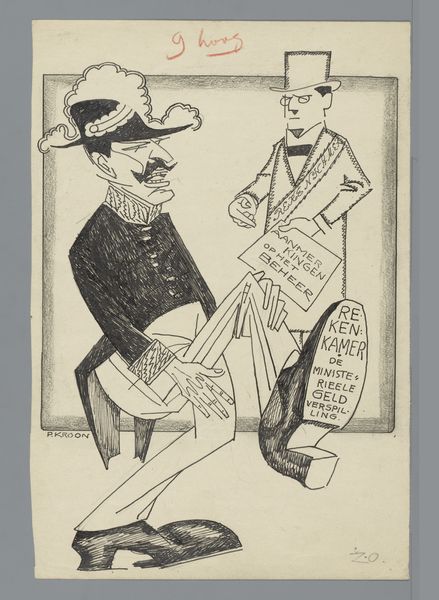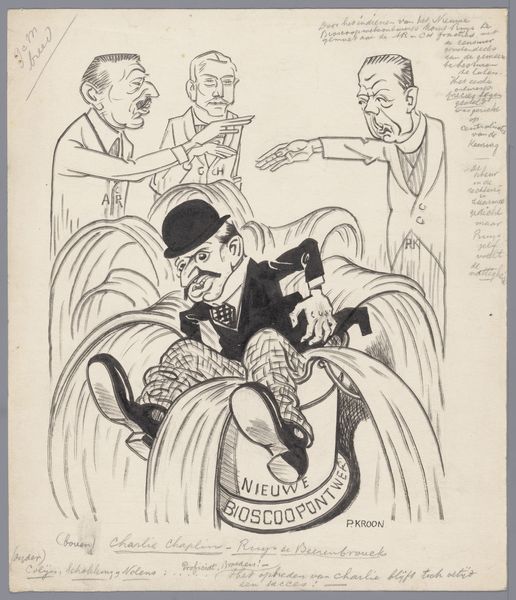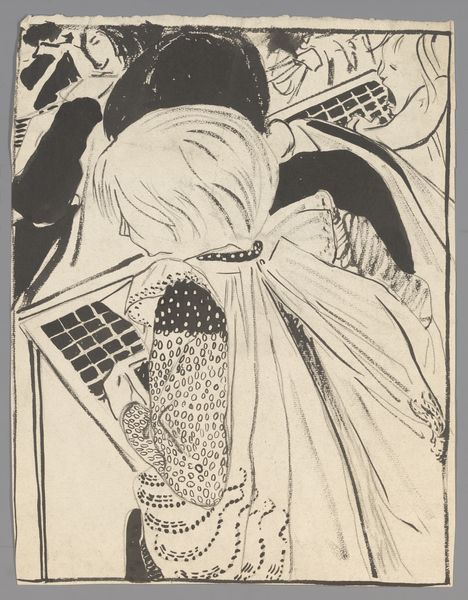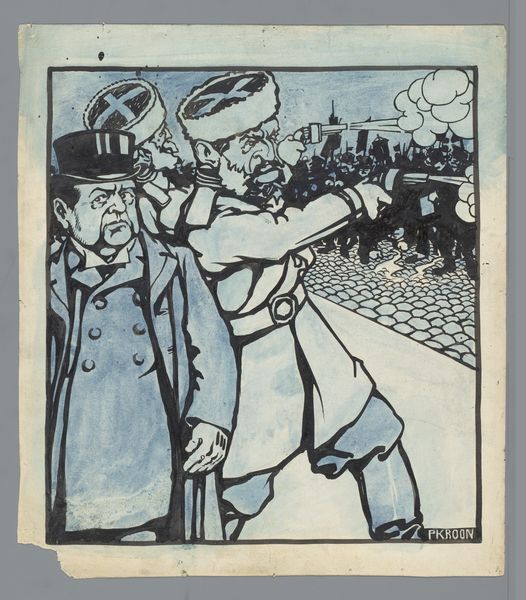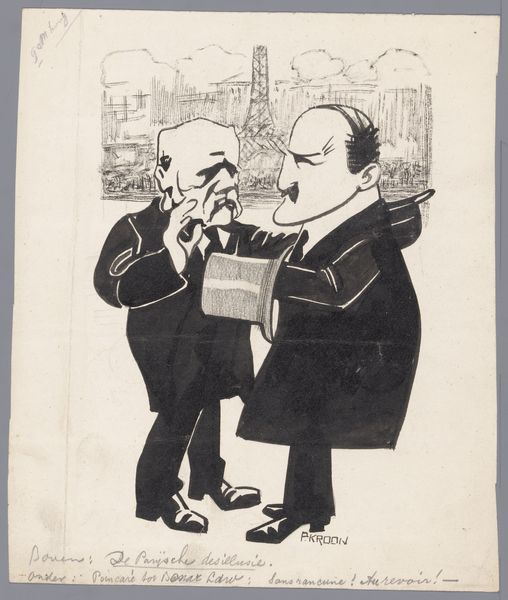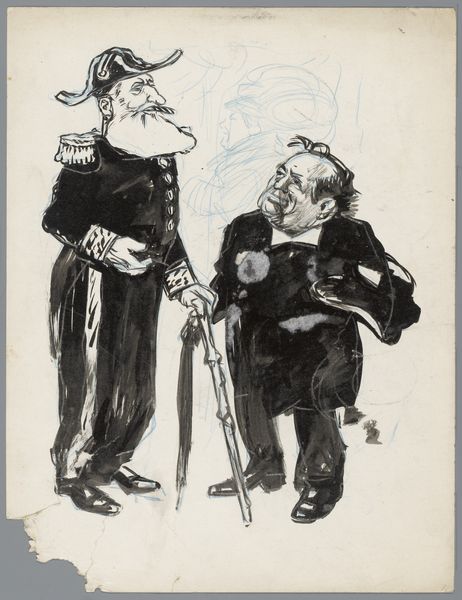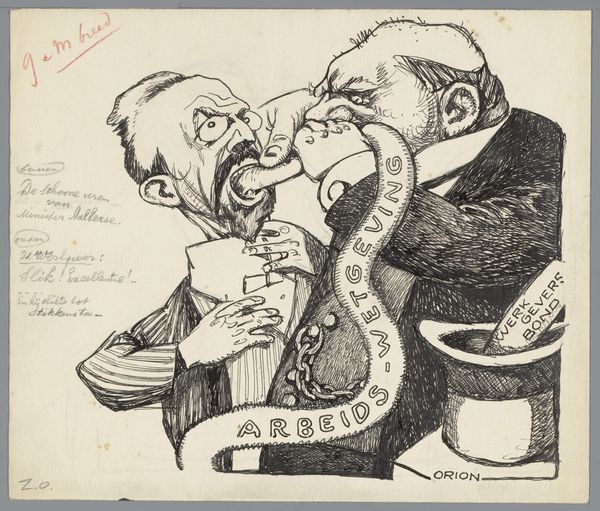
drawing, paper, ink, pen
#
portrait
#
drawing
#
caricature
#
paper
#
ink
#
pen
#
watercolour illustration
Dimensions: height 280 mm, width 185 mm
Copyright: Rijks Museum: Open Domain
Curator: This ink and pen drawing, with touches of watercolour, by Patricq Kroon, likely created between 1915 and 1930, is titled "De troonrede". Editor: My first impression is a sense of ironic grandeur undercut by vulnerability. The scale, the use of line – it's theatrical but fragile, and darkly comic, hinting at broader political discontents. Curator: Absolutely. Kroon positions this caricature within a precise moment in Dutch history, referencing the "troonrede"—the Speech from the Throne. It’s crucial to understand this speech as not just a formality, but a performance of power, one Kroon critiques relentlessly through visual metaphor and sardonic wit. Who is empowered, who is minimized, is central. Editor: Indeed, the symbolic language here is dense. The diminutive figure holding the script seems utterly dependent on the figure to his right, the conductor, perhaps? His baton directs not just music, but perhaps fate. Curator: Consider, too, the word scribbled across the top of the drawing: "Miserere." It's a lament, a cry for mercy, adding another layer of irony and criticism toward this political ritual, unveiling its potential for emptiness. There’s a deep interrogation of leadership here, made more acute by the shadow of war hanging over that period. Editor: It also feels deeply personal, that "Miserere." Is Kroon highlighting not only the political spectacle but the individual, internal experience of participating in what he perceives as a charade? What larger tradition of performance of statehood and government is being alluded to here? The baton becomes both sceptre and staff. Curator: The choice to render the figures as caricatures emphasizes their flaws, humanizes them—while the "miserere" suggests they might even be pitiable. By understanding this specific social and political setting and how Patricq Kroon reflects on it, we engage with the artist’s concerns about identity, authority, and vulnerability within the Dutch national consciousness. Editor: The symbolism is not just national but arguably universal. The human craving for power structures in cultures everywhere becomes a symbolic question mark for this specific point in Dutch time and place. Seeing how it evokes pathos even within the exaggeration of caricature underscores our ongoing, collective unease with authority and its public display.
Comments
No comments
Be the first to comment and join the conversation on the ultimate creative platform.
